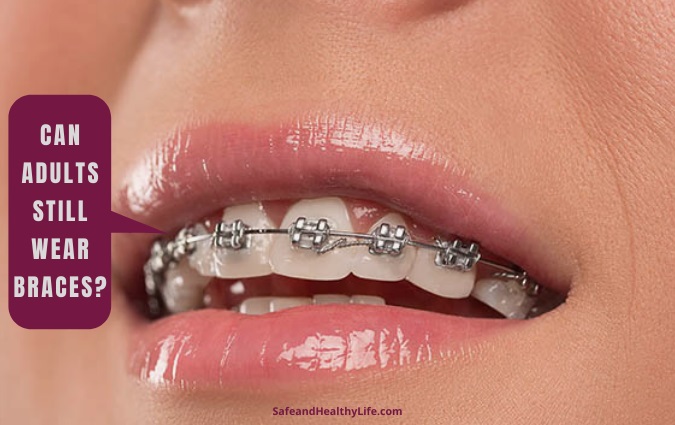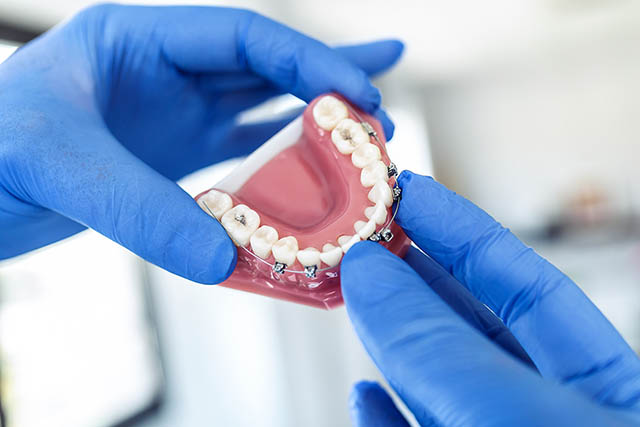
Do you ever watch or see toothpaste ads and envy the flashy smiles of the models?
Not only are their teeth brilliantly white, but they are also perfectly aligned. Having straight teeth is definitely a plus when it comes to dental aesthetics.
People whose teeth are not crooked or overcrowded have attractive smiles. In addition to that, keeping the teeth and mouth clean is also a lot easier for folks with a good set of teeth.
Having crooked teeth is not just an aesthetic issue
How each of your pearly whites erupts and places itself is influenced by the construction of a person’s jaw.
If the jaw appears to be small, there is a big chance that the teeth may be misaligned as they emerge. Imagine the tooth trying to push against each other to find their place.
A poorly aligned set of teeth can also cause challenges with chewing and swallowing, as well as problems with speech, particularly in word pronunciation.
This is a condition referred to as malocclusion, which explains Singapore’s most comprehensive dental portal Dentaleh.
Malocclusion happens when the jaws do not align correctly as they close for the reason that the two dental arches’ teeth are misaligned.
Fixing problems like these will be a breeze with the use of teeth braces, according to Dentaleh. While it seems that having braces attached to the teeth only highlight its aesthetic benefits, we have learned above that this can greatly help in improving the other aspects of our overall health.
Because the use of braces is a lot common among children or teenagers, some think that adults may not be good candidates for this treatment. This is not true. Adults can very well undergo a similar treatment to achieve straight teeth.
However, getting the procedure in adulthood as compared to those done during childhood can have limitations.
Definition of braces used for dental purposes

Dental braces are appliances that aim to straighten misaligned teeth by attaching the device to the teeth in order to gently putting pressure on each of the teeth so that they will shift toward the right direction resulting in their proper alignment.
As the braces put pressure on your teeth, your jawbone will adjust and let each of the tooth and its root to shift.
Traditionally, stainless steel is the material from which braces are crafted from. Continuous innovations have produced more options for brackets, such as those derived from ceramic or plastic. Ceramic brackets mimic the color of the teeth.
Hence, if low key braces are what you wish for, you can choose this type as they will make them less obvious. Do note that the quality of ceramic and plastic are lower compared to stainless steel.
Meaning these materials are easy to break. Talking about duration, braces that are ceramic in nature tend to take time in producing results. This accounts for the ceramic and plastic material’s steel wire resistance.
If you prefer the device to not be totally seen, there is also an option to keep them hidden by attaching them to the back of the teeth. The lingual appliance is used for this type of treatment.
Because of their location, braces of this kind can be a handful to maintain, especially when it comes to cleaning. They may also cause injury to the tongue, plus bring difficulty when talking.
What are the steps involved in the process of placing braces?

Some preparations may be done by your orthodontist prior to the date of your scheduled braces procedure.
For example, teeth that are tightly packed together may require rubber bands or spacers placed in order to leave ample space for the teeth situated at the far end to accommodate bands to fit around them.
On the day scheduled for the attachment of your braces, the following steps are involved:
- First, thorough cleansing and drying of your teeth will commence.
- The next step is to get the brackets fixed to the center of your tooth with the help of special glue and blue light to set it in place. Whether you choose metal or ceramic is the base form of your brackets, both serve the purpose of keeping the wires that are attached to the teeth firmly in place.
- Then, metal bands are set around your back molars. The band is affixed to your tooth also with the use of special glue and blue light. This step may bring some discomfort as the orthodontist may apply pressure as the band is locked in place. I feel pain is felt once this is done, inform your orthodontist so the band may be adjusted accordingly and ease the pressure felt by the tooth.
- Finally, the archwire is affixed to your teeth’s brackets. A tiny elastic band, called a ligature, is wrapped around a bracket to keep the wire from moving.
Is there a difference between getting braces at a young age as compared to having them as adults?
As mentioned earlier, there may be limitations when getting braces attached to the teeth for adults. Some changes that may be needed when it comes to a structure may not be feasible unless surgery is done.
This is because the bones of adults are already permanent and have reached their pinnacle for growth.
Other complications like bone loss can also happen. This is common among people with gum disease. If this is the case, a periodontist may also be needed for consultation.
About The Author:
Jason Wong is a journalist and blogger based in Singapore, writing mostly about the Health and Medical field in Singapore and South-East Asia.




